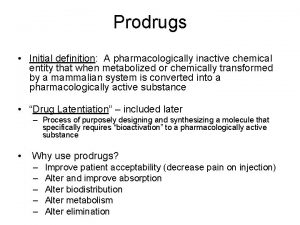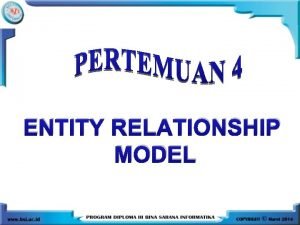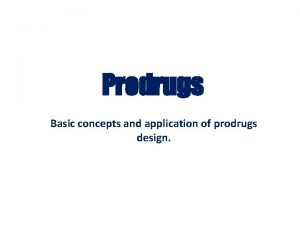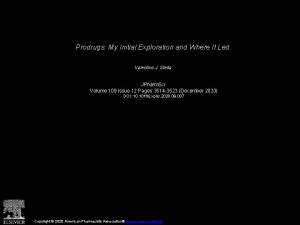Prodrugs Initial definition A pharmacologically inactive chemical entity





- Slides: 5

Prodrugs • Initial definition: A pharmacologically inactive chemical entity that when metabolized or chemically transformed by a mammalian system is converted into a pharmacologically active substance • “Drug Latentiation” – included later – Process of purposely designing and synthesizing a molecule that specifically requires “bioactivation” to a pharmacologically active substance • Why use prodrugs? – – – Improve patient acceptability (decrease pain on injection) Alter and improve absorption Alter biodistribution Alter metabolism Alter elimination

Non-Prodrugs • “Hard Drugs” - compounds that contain structural characteristics required for activity but are not susceptible to metabolism – Increased efficiency by avoiding metabolism – No toxic metabolites are formed – HOWEVER, less readily eliminated due to lack of metabolism • “Soft Drugs” - These are the opposite of prodrugs. These compounds are designed and synthesized as ACTIVE compounds that readily undergo metabolic inactivation to nontoxic products

Conversion of Prodrugs • Metabolism (enzyme dependant) • Chemical Methods (non-dependant) – Hydrolysis – Decarboxylation – NOT patient dependant! – Stability/Storage issues

Prodrugs • Carrier-linked prodrugs – drugs that are attached through a metabolically labile chemical linkage to another molecule designated as the “promoiety” – The “promoiety” alters the physical properites of the drug to increase water or fat solubility or provide site-directed delivery – Advantages: • • Increased absorption Injection site pain relief Elimination of unpleasant taste Decreased toxicity Decreased metabolic inactivation Increased chemical stability Prolonged or shortened action

Chloramphenicol • Enzymatic and intramolecular spontaneous hydrolysis • Increased water solubility, ester itself is inactive as an antibiotic • Promoiety should be nontoxic and easily excreted • Type of promoiety chosen is a function of properties desired









